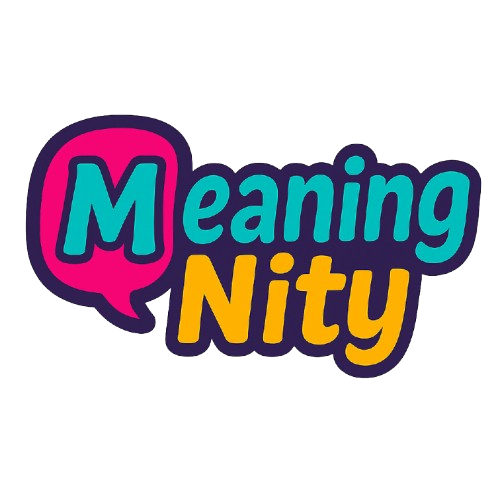27 Ways to Say ‘Just a Heads Up’ Professionally
In the workplace, how we share information matters. The phrase “just a heads up” is often casual. However, sometimes we need to say the same thing in a more polished way. Whether in emails, meetings, or quick chats, it’s important to communicate with respect and clarity.
Dive Deeper : Cancelation vs Cancellation: Understanding the Key Difference
The Origins of the Phrase “Just a Heads Up”
“Just a heads up” comes from sports, especially baseball. Players used it to warn each other about fast pitches. Over time, the phrase became common in everyday language. Today, it’s often used as a quick warning or reminder. But in a professional setting, it may feel too casual.

Below 27 Ways to Say “Just a Heads Up” .
- “I wanted to make you aware of…”
Example: “I wanted to make you aware of the project timeline changes.”
Best Use Case: When you need to share important information in a formal way. - “Please be advised that…”
Example: “Please be advised that the meeting has been rescheduled.”
Best Use Case: To provide official information, especially in emails or formal notes. - “For your information…”
Example: “For your information, we have a new team member joining today.”
Best Use Case: Ideal when you want to keep someone informed but don’t need a response. - “I’d like to bring to your attention…”
Example: “I’d like to bring to your attention the deadline for the report.”
Best Use Case: When you want to focus someone’s attention on an important matter. - “Just so you’re aware…”
Example: “Just so you’re aware, we have a company-wide meeting this afternoon.”
Best Use Case: A simple, polite way to share information quickly. - “A quick update on…”
Example: “A quick update on the client call: everything went well.”
Best Use Case: When you want to give a fast, useful update. - “I wanted to notify you that…”
Example: “I wanted to notify you that the team’s proposal is ready for review.”
Best Use Case: Formal notification, especially when something is ready or prepared. - “Just a brief reminder…”
Example: “Just a brief reminder about the upcoming deadline.”
Best Use Case: When reminding someone about an event or task. - “Please note that…”
Example: “Please note that the system will be down for maintenance tonight.”
Best Use Case: Useful when giving information that needs attention. - “I thought I’d share…”
Example: “I thought I’d share the latest draft with you for feedback.”
Best Use Case: For offering information or updates casually yet professionally. - “I wanted to give you a quick update…”
Example: “I wanted to give you a quick update on the project’s status.”
Best Use Case: To share important news in a fast and friendly way. - “For your consideration…”
Example: “For your consideration, here is the final report.”
Best Use Case: When you want someone to review or think about something. - “Just to keep you in the loop…”
Example: “Just to keep you in the loop, the client approved the proposal.”
Best Use Case: When you want to keep someone updated on something they’re involved with. - “As a quick reminder…”
Example: “As a quick reminder, we have a meeting at 3 PM today.”
Best Use Case: Simple and effective for reminding others of an upcoming event. - “I’d like to give you a heads up on…”
Example: “I’d like to give you a heads up on the new office policies.”
Best Use Case: Good for sharing important information before it becomes an issue. - “This is to inform you that…”
Example: “This is to inform you that the report is due tomorrow.”
Best Use Case: A formal way to share official news. - “Just to let you know…”
Example: “Just to let you know, we finished the project ahead of schedule.”
Best Use Case: When giving a friendly update in a casual manner. - “I wanted to point out…”
Example: “I wanted to point out that we’ll need to adjust the budget.”
Best Use Case: Useful when you need to highlight a specific issue. - “Please be aware that…”
Example: “Please be aware that we are switching to a new software next week.”
Best Use Case: When sharing something that requires someone to take notice. - “Just a quick note to inform you…”
Example: “Just a quick note to inform you that the meeting has been postponed.”
Best Use Case: When you need to pass along important information without a lengthy message. - “I thought you’d like to know…”
Example: “I thought you’d like to know that we secured the client’s approval.”
Best Use Case: A more personal way to share positive updates or results. - “Here’s a quick update…”
Example: “Here’s a quick update on the sales numbers: they’re looking good.”
Best Use Case: For sharing quick, positive news. - “I just wanted to mention…”
Example: “I just wanted to mention that the new policy is in effect starting today.”
Best Use Case: When adding a small but important detail. - “This serves as a reminder…”
Example: “This serves as a reminder that the deadline is next Friday.”
Best Use Case: When you need to remind someone about a critical date or action. - “I’d like to update you on…”
Example: “I’d like to update you on the changes to the work schedule.”
Best Use Case: When you need to give a more detailed update. - “I just wanted to inform you that…”
Example: “I just wanted to inform you that we received the final approval.”
Best Use Case: A formal way to announce a key piece of news. - “For your reference…”
Example: “For your reference, the budget proposal is attached.”
Best Use Case: When providing documents or details for someone to review.

How to Use “Just a Heads Up” in Everyday Conversation
While “just a heads up” is widely used, it’s a bit casual for some professional settings. The alternatives above give you options to sound more polished when sharing important news. Whether you’re updating a colleague, providing reminders, or giving a formal notice, these phrases will make sure your message is clear and well-received.
Dive Deeper : Requester vs. Requestor: Which Spelling Should You Use?
Conclusion
Choosing the right words makes a difference in how your message is perceived. By using these alternatives to “just a heads up,” you can communicate more professionally, while still keeping your messages friendly and informative. Use them to enhance your workplace communication and ensure your message is always appropriate and effective.







